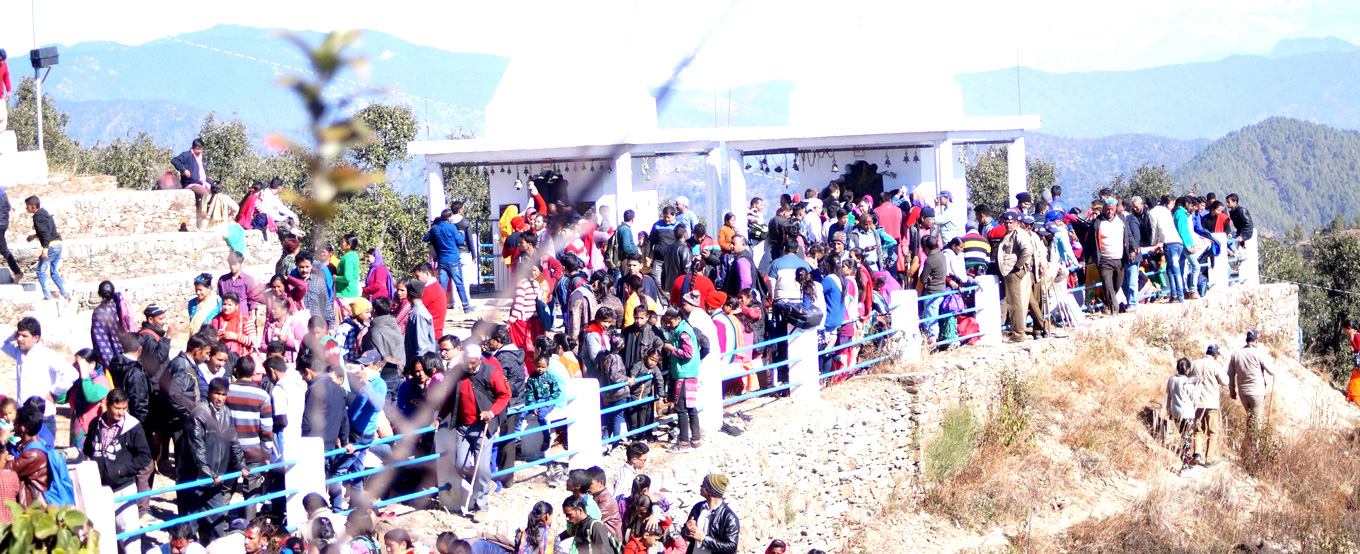
The hill temple of Kalinka is situated in Bironkhal block of Pauri Garhwal district , Uttarakhand in northern India. The temple complex lies close to the border with the Almora district and is dedicated to Goddess Kali. The temple has been in existence for centuries but the new structure has been renovated a couple of times in the last decade. It is often confused with Bunkhal kalinka, which is near Malund village of Raath region in Thalisain.
Historically, construction of the temple has been credited to the Badiyaari community. Badiyaris were a semi-nomadic shepherding tribe. Until recently, they have taken up varying professions in the state, some settling in larger cities within or outside of Uttarakhand. However, some still practice their ancestral profession of farming and animal husbandry. According to a folk-legend, a badiyaari shepherd was herding his sheep on the ridge which houses the temple at present. As he was sleeping at night, he was awakened by a loud cracking sound and thunder with flashes of lightning. He saw a bright light and heard a shrill and furious voice that commanded him to climb up the mountain and build a shrine there. The shrine was to be dedicated to the goddess. He, after paying his homage to the goddess, started climbing uphill and after reaching the summit, gathered some rocks and formed a mound.
Over time, the summit was cleared of all the brambles and vegetation to make bigger structures. The temple in its present lotus-bud shaped shikhar (dome) was constructed around the year 2010. A charitable co-operative by the name of "Garhwal-Almora Kali Mandir Vikas Samiti" has been formed by residents of roughly a dozen villages surrounding the hill-temple. All these villages have a considerable Badiyari population. This organization of villagers keeps the temple premises clean and are responsible for any beautification projects to be taken up in the future.
Goddess Kali is much revered among the local people and the temple holds an important place during social events and religious festivals. A fair, known locally as Kālinkā Jatodā, is held here in winter which attracts thousands of local people and outsiders. Historically, hundreds of goats, rams and male buffalo calves have been sacrificed here during that fair. Animal sacrifices have been a subject of controversy and criticism in recent times. Government and law enforcements have been trying to curb this practice but it continues despite all the efforts. It is deeply imbibed in the local culture.
Jai Ma Kali!


